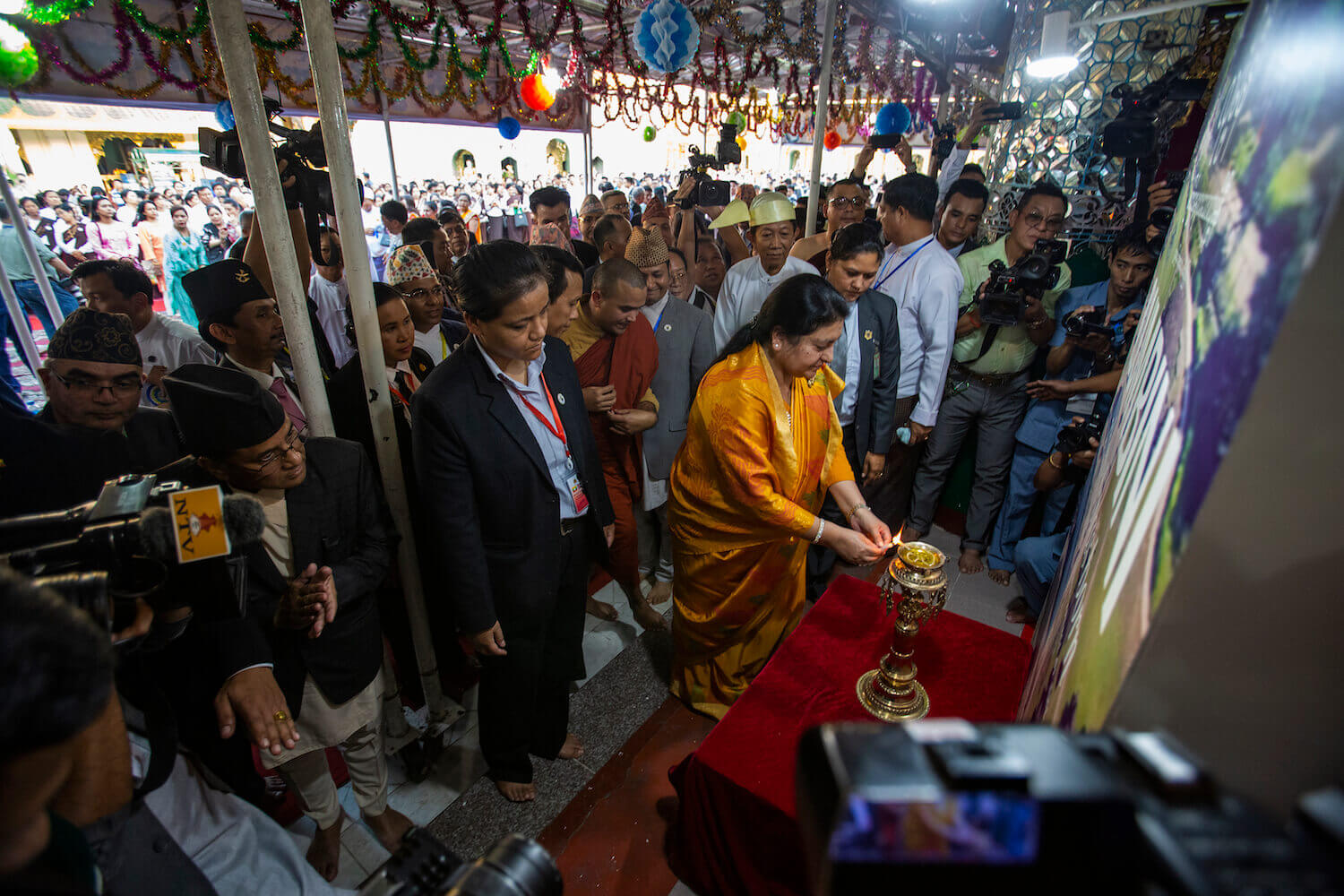Lumbini Museum exhibition in Burma

President Bidya Devi Bhandari concluded her four-day state visit to Burma on 19 October by inaugurating an exhibition on Lumbini, a UNESCO World Heritage Property, in Yangon’s iconic Shwedagon Pagoda. Nepali foreign minister Predeep Gyawali and Burma's Union Minister for Religious Affairs and Culture Thura U Aung Ko were also present at the event.
The exhibition titled ‘Lumbini, Where I was Born’ brings glimpses of the Buddha’s birthplace to the Burmese audience and showcases Buddhist archaeological sites of importance.
“It is a great honour to organise an exhibition in Shwedagon Pagoda, the most sacred site in Burma, holding relics of the four previous Buddhas of this era,” said Vice Chair Ven Metteyya Sakyaputta of the Lumbini Development Trust. “Given that three of the past four Buddhas were born in present day Nepal, as recorded by Emperor Asoka’s pillars, there perhaps could not be more ideal venue than this iconic gilded stupa area to showcase Lumbini and the surrounding sacred sites.”
The exhibit particularly highlights the pivotal role of U Thant, the then Burmese Secretary General of the United Nations, in the development of Lumbini. When Thant first visited Lumbini in 1967, he was moved to tears and was determined to turn the nativity site into an international centre for peace.
Read also:
U Thant, Kenzo Tange and the Buddha's birthplace, Kunda Dixit
Plans were drawn, a design was developed and approved, and funds set up. But over the years the masterplan languished due to corruption, poor governance and conflict in Nepal. Now, Thant’s grand vision is finally coming true after 40 years.
“Lumbini is not just the birthplace of the Buddha, it is the birthplace of far reaching universal ideas such as tolerance, compassion and peace. In a world ridden with conflict and disillusionment, the universality of the Buddha’s message is even more relevant today,” said Sumnina Udas, founding director of the Lumbini Museum.









The exhibition will run until 30th October. It is organised by the Lumbini Development Trust, Nepal as part of the Visit Nepal 2020 campaign and curated by the Lumbini Museum and UNESCO Chair from Durham University.
Photos by Zwe Nyi Htet




